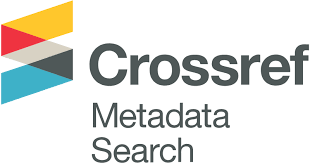In Silico Design, Molecular Docking, Drug-likeness Analysis, Bioactivity Score Prediction and Evaluation Anesthetic Activity of Some Novel Ketamine Analogues as pLGICs Inhibitors
DOI:
https://doi.org/10.58916/jhas.vi.306Keywords:
ketamine, anesthesia, in silico, molecular docking, pentameric ligand gated ion channel (pLGIC), drug-likeness, Lipinski rule, oral bioavailability, bioactivity score.Abstract
This paper aims to study the simulation of molecular fusion of ketamine isomers, molecular docking simulation of S & R ketamine isomers and (22) compounds of its analogues, each of these compounds has two enantiomers (S & R), was performed to predict their binding energies and inhibition constants, targeting Pentameric Ligand-gated Ion Channels receptor (pLGICs) to evaluate the anesthetic activity. The X-ray crystallographic structure of the target protein pLGICs receptor was downloaded from Protein Data Bank (PDB) website, with the code (4f8h). Discovery Studio Visualizer software was used to prepare PDB format files of designed molecules. The molecular docking interactions between the A chain of target protein and the ligands were performed using AutoDockTools v.1.5.6 software. The results indicated that (12) of the (S)- isomers of the designed molecules, (3, 4, 5, 7, 8, 9, 12, 18, 19, 20, 21 and 22) and (4) of the (R)-isomers (12, 20, 21 and 22) had lower binding energies than the standard ligands (S)-ketamine (JC9) and (R)-ketamine (RKE) and are predicted to have high affinities for pLGICs receptor. Furthermore, the drug-likeness results using the online Swiss ADME server showed that all of the designed molecules had good bioavailability, 0.55 and obeyed the Rule of five (RO5), with 0 violation. Bioactivity score results using Molinspiration web. server showed that all molecules had good ion channel modulator activities with bioactivity scores from 0.02 to 0.86, except molecules 11S and 11R, which are moderately active with bioactivity score -0.04. It is concluded that these compounds mediate their anesthetic activities by regulating the ion channels in central nervous system and lower doses of these compounds are required to mediate their anesthetic activities.
Downloads
References
James E. Svenson MD, MS, Michael K. Abernathy MD. Ketamine for prehospital use: new look at an old drug. American Journal of Emergency Medicine 2007; 25: 977 – 980
Le Daré B, Pelletier R, Morel I, Gicquel T. History of Ketamine: an ancient molecule that is still popular today. Annales Pharmaceutiques Françaises 2022; 80(1):1-8.
Johnstone M, Evans V, Baigel S. Sernyl (CI-395) in clinical anaesthesia. British Journal of Anaesthesia. 1959; 31:433–439.
Lear E, Suntay R, Pallin IM and Chiron AE. Cyclohexamine (CI-400). A new intravenous agent. Anesthesiology 1959; 20:330–335.
Li L, Vlisides PE: Ketamine: 50 years of modulating the mind. Frontiers in Human Neuroscience. 2016; 10(612):1–15.
Domino EF. Taming the ketamine tiger. 1965. Anesthesiology 2010; 113:678–684.
Zhornitsky S, Oliva H, Jayne L, Allsop A, Kaye A, Potenza M and Angarita G. Changes in synaptic markers after administration of ketamine or psychedelics: a systematic scoping review. Frontiers in Psychiatry. 2023;14: 1197890.
Marion V, Céline L, Bruno P, Gisèle P. Assessment of Initial Depressive State and Pain Relief with Ketamine in Patients with Chronic Refractory Pain. Journal of the American Medical Association. 2023;6(5):1–13.
Abdullah SB, Deipthan P, Mohammed A, Cassie J, Mohammed A. Evaluating the Safety and Efficacy of Ketamine as a Bronchodilator in Pediatric Patients with Acute Asthma Exacerbation: A Review. Cureus 2023;14:(6):1–9.
Zhang J, Ma1 Q,2, Li W, Li X and Chen X. S-Ketamine attenuates inflammatory effect and
modulates the immune response in patients undergoing modified radical mastectomy: A prospective randomized controlled trial. Frontiers in Pharmacology. 2023; 10.3389: 1–10.
Ilkjaer S, petersen KL, brennum J, wernberg M AND dahl JB. Effect of systemic N-methyl-D-aspartate receptor antagonist (ketamine) on primary and secondary hyperalgesia in humans. British Journal of Anaesthesia 1996; 76: 829–834.
Wei Y, Chang L, Hashimoto K. A historical review of antidepressant effects of ketamine and its enantiomers. Pharmacology, Biochemistry and Behavior 2020; 190:1–9
Fung EL, Yam KM, Yau ML. Ketamine use for super-refractory status epilepticus in children. Hong Kong Medical Journal. 2020; 26:549–550
Adnan TB, Michael LS, Christopher S, Laura PJ, Wendy LW, Diana ML, Charles MG,
Volkan T, Parthak P, Umesh D, Michiaki I, Robert DB, Kanwaljeet JS. Ketamine as a neuroprotective and anti-inflammatory agent in children undergoing surgery on cardiopulmonary bypass: A pilot randomized, double-blind, placebo-controlled trial. Pediatric Critical Care Medicine. 2012; 3:328–337.
White PF, Schuttler J, Shafer J, Stanski DR, Horai Y. and Trevor AJ. Comparative pharmacology of the ketamine isomers. British Journal of Anaesthesia. 1985; 57: 197–203
Charles FZ, Yukitoshi I, and Steven M. Ketamine: NMDA Receptors and Beyond. The Journal of Neuroscience 2016; 36(44):11158–11164
Pan J, Chen Q, Willenbring D, Mowrey D, Kong X, Cohen A, Christopher BD, Xu Y and Tang P. Structure of the Pentameric Ligand-Gated Ion Channel GLIC Bound with Anesthetic Ketamine. Cell press 2012; 20: 1463–1469.
Thompson AJ, Lester HA, Lummis SC. The structural basis of function in Cys-loop receptors. Quarterly Reviews of Biophysics. 2010; 43: 449–499.
Jansen M, Bali M, Akabas MH. Modular design of Cys-loop ligand-gated ion channels: functional 5-HT3 and GABA rho1 receptors lacking the large cytoplasmic M3M4 loop. Journal of General Physiology. 2008; 131: 137–146.
Bocquet N, Nury H, Baaden M, Poupon C, Changeux JP, Changeux JP, Delarue M and Corringer PJ. X-ray structure of a pentameric ligand-gated ion channel in an apparently open conformation. Nature 2009; 457: 111–114.
Unwin N. Refined Structure of the Nicotinic Acetylcholine Receptor at 4A° Resolution. Journal of Molecular Biology. 2005;346: 967–989.
Costa CJ and Baenzige JE. Gating of Pentameric Ligand-Gated Ion Channels: Structural Insights and Ambiguities. Cell press 2013;21(8): 1271–1283.
Douglas B Kitchen, Helene Decornez, John R Furr, Jurgen Bajorath. Docking and scoring in virtual screening for drug discovery: methods and applications. Nature Reviews Drug Discovery. 2004;3: 935–949.
Morris GM, Huey R, Lindstrom W, Sanner MF, Belew RK, Goodsell DS, Olson AJ. Auto-Dock4 and AutoDockTools4: automated docking with selective receptor flexibility. Journal of Computational Chemistry. 2009; 30(16): 2785–2791.
Denish P, Miloni B and Chintan S. A review on computational chemistry software for drug designing and discovery. World Journal of Pharmaceutical Research. 2022; 11(12): 830–851.
Daina A, Michielin O, Zoete V. SwissADME: a free web tool to evaluate pharmacokinetics, drug-likeness and medicinal chemistry friendliness of small molecules. Scientific Reports. 2017; 7(42717): 1–13.
Syed M, Danish R, Shazi S and Haneef M. A simple click by click protocol to perform docking: autodock 4.2 made easy for non-bioinformaticians. Experimental and Clinical Sciences Journal 2013; 12:831–857.
Moriguchi I, Hirono S, Liu Q, Nakagome I, Matsushita Y. Simple method of calculating octanol/water partition coefficient. Chemical and Pharmaceutical Bulletin. 1992; 40(1):127–130.
Wildman SA and Crippen GM. Prediction of physicochemical parameters by atomic contributions. Journal of chemical information and computer sciences. 1999; 39: 868–873.
Lipinski CA, Lombardo F, Dominy BW and Feeney PJ. Experimental and computational approaches to estimate solubility and permeability in drug discovery and development settings. Advanced Drug Delivery Reviews. 2001; 46, 3–26.
Veber, DF, Johnson SR, Cheng, HY, Smith BR, Ward, KW and Kopple KD. Molecular properties that influence the oral bioavailability of drug candidates. Journal of Medicinal Chemistry. 2002;45: 2615–2623.
Egan WJ, Merz KM, and Baldwin JJ. Prediction of drug absorption using multivariate statistics. Journal of Medicinal Chemistry. 2000, 43: 3867–3877.
Violeta I, Miroslav R, Biljana Ar and Aleksandra P. Lipinski’s rule of five, famous extensions and famous exceptions. Chemia Naissensis. 2020; 3 (1): 171–177
Brito MA. Pharmacokinetic study with computational tools in the medicinal chemistry course. Brazilian Journal of Pharmaceutical Sciences. 2011; 47(4): 797–805.
Sebastjan K, Marko J, and Urban B. Comparative Analyses of Medicinal Chemistry and Cheminformatics Filters with Accessible Implementation in Konstanz Information Miner (KNIME). International Journal of Molecular Sciences. 2022; 23(10): 5727.
Pathania S and Singh PK. Analyzing FDA-approved drugs for compliance of pharmacokinetic principles: should there be a critical screening parameter in drug designing protocols?. Expert Opinion on Drug Metabolism & Toxicology. 2021; 17(4): 351–354.
Ali J, Camilleri P, Brown MB, Hutt AJ, and Kirton SB. In silico prediction of aqueous solubility using simple QSPR models: The importance of phenol and phenol-like moieties. Journal of Chemical Information and Modeling. 2012; 52: 2950–2957.
Zhu J, Wang J, Yuc H, Li Y,1 and Hou T. Recent developments of in silico predictions of oral bioavailability. Combinatorial Chemistry & High Throughput Screening. 2011; 14(5): 1–13
Tahmeena K, Shalini D, Rumana A, Saman R, Iqbal A, Seema J and Abdul Rahman K. Molecular docking, PASS analysis, bioactivity score prediction, synthesis, characterization and biological activity evaluation of a functionalized 2-butanone thiosemicarbazone ligand and its complexes. Journal of Chemical Biology. 2017; 10:91–104.















